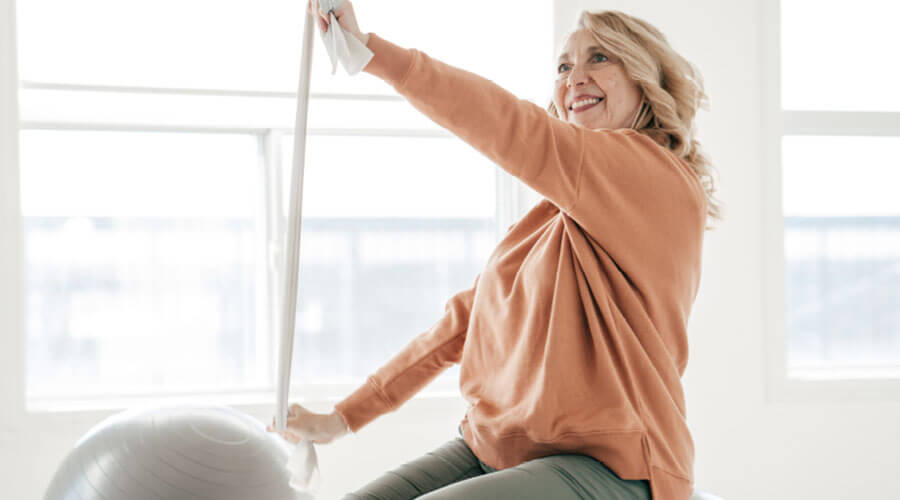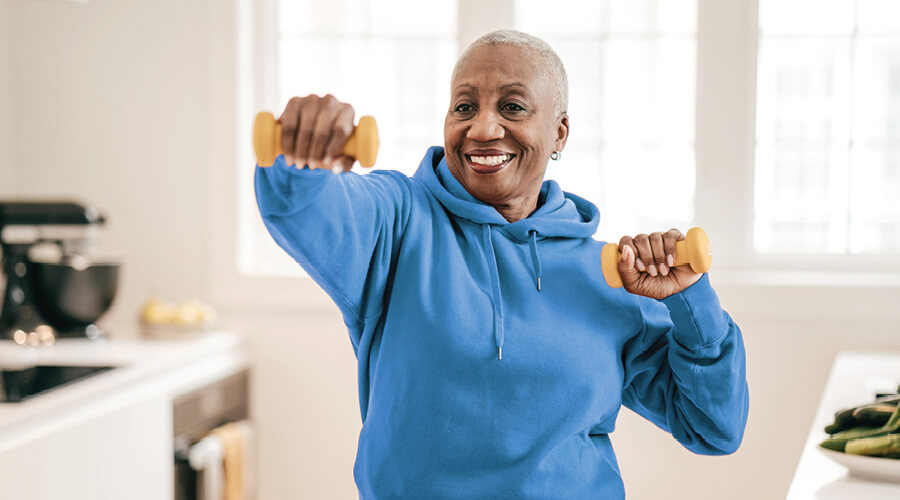According to the CDC, arthritis affects 58.5 million or 1 in 4 U.S. adults, with some types occurring more often in older people.
The term arthritis refers to joint pain or joint disease and encompasses more than 100 types and related conditions. Specific symptoms vary but usually include swelling, pain, stiffness and diminished range of motion in the joints, per the Arthritis Foundation.
Some of the common types of arthritis include osteoarthritis, rheumatoid arthritis and gout, but the cause is unknown. Certain factors can raise a person’s risk, including age, sex, genetics, excess weight, joint injuries, infection, smoking and occupation.
The importance of being active
One of the keys to relieving arthritis pain is physical activity. The CDC says being physically active can reduce pain, and improve function, mood and quality of life.
Exercises recommended for arthritis pain relief include:
- Range of motion exercises that include gentle stretches to improve flexibility and reduce stiffness.
- Strength training such as low-impact resistance exercises to strengthen muscles that support the affected joints.
- Aerobic exercise that includes low-impact activities like walking, swimming or cycling to improve cardiovascular health and reduce joint pain.
- Balance exercises such as activities to enhance stability and reduce the risk of falls.
Consult your care provider to find arthritis-specific exercise classes. The Arthritis Foundation offers several options.
Even everyday movements like taking your dog for a walk or doing yard work are great ways to lessen arthritis pain. With any formal or informal activity you do, be mindful of what will work for your body.
The best ways to lessen pain while being active include:
- Listening to your body and stopping any activity that causes pain
- Using heat before exercise for about 20 minutes to relax joints and muscles
- Moving gently to warm up for 5 to 10 minutes before exercising
- Keeping a slow pace and taking a break if you feel pain
- Icing when done, for up to 20 minutes, especially if joints are swollen
When to seek care
If your arthritis pain is increasing in severity, the swelling is persistent and you’re unable to perform daily activities, you may require medical attention.
It’s important to consult a health care professional for personalized treatment and management strategies to help maintain or improve your quality of life.
Take control of your symptoms
When it comes to arthritis and exercise, some physical activity is better than none. Try to aim for at least 150 minutes of activity (2.5 hours) per week.
Incorporating regular exercise into your routine can help you take control of your arthritis symptoms and live a more fulfilling life.




